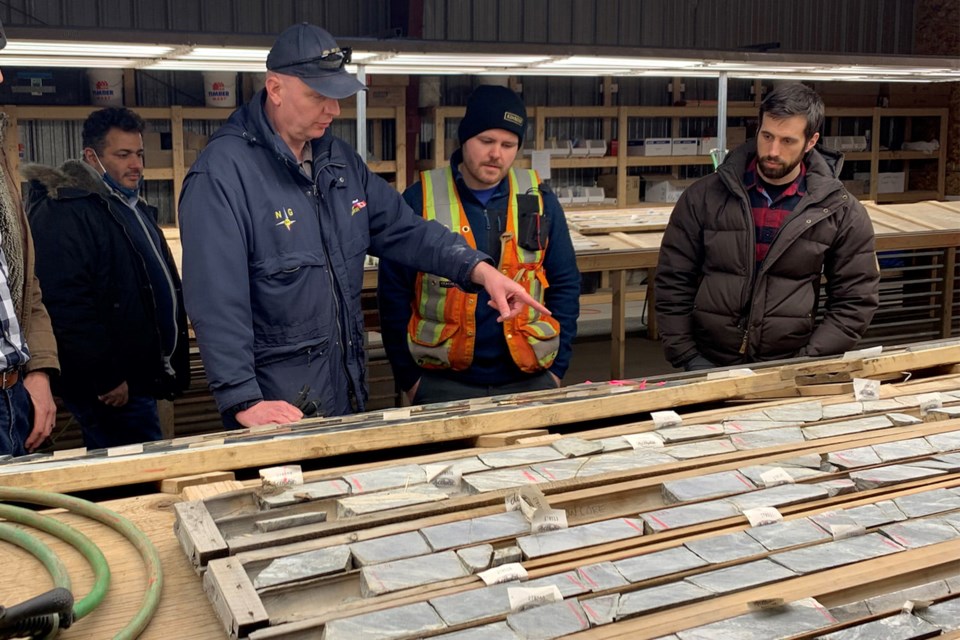More than a year after scooping up the exploration poster boys of Red Lake, Kinross Gold published a first-ever gold resource estimate of its Great Bear Project last week.
Kinross is convinced Great Bear will be a top tier, high-grade and long-lasting open pit and underground mine. The company acquired the project, then known as the Dixie Project, in late 2021 without a resource estimate ever being published by Great Bear Resources of Vancouver.
In a news release, Toronto-based Kinross said it carried out 250,000 metres of drilling last year to produce an initial mineral resource estimate of 2.7 million ounces of indicated resources and 2.3 million ounces of inferred resource.
A large amount of the indicated gold is near the surface, making it accessible by open-pit mining methods. The first 500 metres of drilling was at the LP Fault Zone, the possible entry point of where mining would start.
Great Bear is 25 kilometres southeast of the town of Red Lake. It’s in an area of the famous gold camp that hasn’t been mined but has been extensively explored in recent years. Infrastructure and logistics are not a problem. Great Bear is reachable by logging roads with a paved highway, natural gas pipeline and power line running parallel to the project.
Sign up for the Sudbury Mining Solutions weekly newsletter here.
Kinross believes Great Bear has open-ended high-grade potential, especially at depth. In laying out its future development plans, Kinross expects to target high grade areas of the property in the early years of potential mine production.
There are “multiple zones”of high-grade gold mineralization running across the property, which will be focus of more drilling this year and beyond.
Kinross conducted metallurgical testing last year and reported “excellent recoveries.” Early test work indicated a high gold recovery of 95 per cent. Met testing will continue in 2023 to gain a higher degree of confidence.
The company said it’s progressing well with its baseline environmental studies, local community socio-economic studies and preliminary engineering, all required in the permitting process. Its First Nation engagement communities are Wabauskang and Lac Seul, on whose traditional territories where Great Bear is situated.
The exploration focus for 2023 is to build ounces on the property and identify new drill targets. Kinross said in a recent investor representation that this initial resource estimate is “just the beginning.”
Deep drilling down to 1,000 metres has returned wide and high-grade intercepts which point to a mine with some longevity, the company notes.
The company has compared Great Bear to Hemlo, on the north shore of Lake Superior, where 90 per cent of the gold was mined from underground at depths greater than 500 metres.
Kinross is outlining plans to drive an exploration ramp to enable underground drilling of the LP Fault and nearby Hinge and Limb zones, as well as to extract a bulk sample. A preliminary economic assessment of what a mine could look like could be published in 2024, the company said.
In laying out its production path, early work could begin by late 2026 or early 2027, depending on the expediency of government permitting.
Company CEO-President Paul Rollinson was pleased to get the resource estimate out, stating in a news release that the results firm up their expectations that Great Bear can be a quality mining asset with plenty of upside for shareholders.
He believes this resource estimate is “just the beginning” with exploration drilling showing that high grade and visible gold hits at depths of one kilometre.
“In just one year since acquiring the property, we have validated our belief for this to potentially become a world class asset,” he said in a statement.
”The initial mineral resource estimate and continuity of high grades and widths at depth reinforces our vision for a high-quality open pit and sizeable underground mine.”




